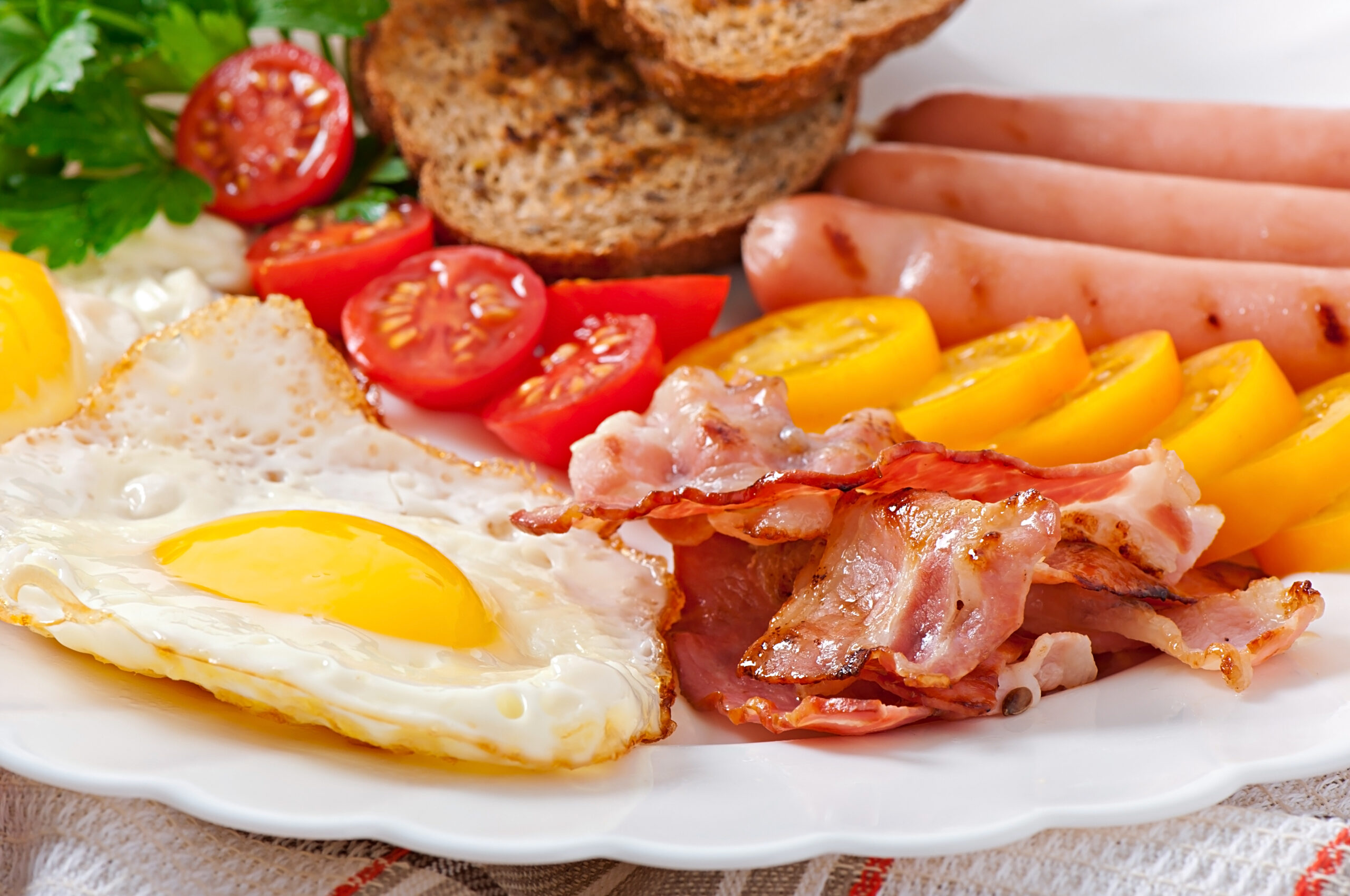Instagram Captions for Couples to Express Your Love


Baking bacon in the oven is a game-changer for home cooks and bacon enthusiasts alike. This method not only simplifies the cooking process but also ensures perfectly crispy results every time. Unlike traditional stovetop frying, oven-baked bacon is less messy and more consistent, making it an ideal choice for both casual breakfasts and elaborate brunches. In this guide, we’ll explore essential techniques for baking bacon, discuss the best types of bacon to use, and offer tips on maximizing flavor and managing bacon grease efficiently.
Mastering the art of baking bacon begins with understanding a few key techniques. First, preheat your oven to 400°F (200°C). This temperature is optimal for rendering the fat evenly while achieving a crisp texture. Arrange the bacon slices on a baking sheet in a single layer without overlapping. This ensures even cooking and prevents the bacon from sticking together.
Another important technique is to use a wire rack placed over the baking sheet. This allows the bacon to cook from all sides, promoting even crispiness and allowing excess fat to drip away. If you prefer your bacon extra crispy, consider flipping the slices halfway through the cooking process.
The type of baking sheet you use can impact the outcome of your oven-baked bacon. A heavy-duty, rimmed baking sheet is ideal as it can withstand high temperatures and contains the rendered fat. Non-stick baking sheets can be useful, but they are not essential if you line the sheet with foil or parchment paper.
Different types of baking sheets, such as aluminum or stainless steel, can affect cooking times slightly. Aluminum sheets conduct heat efficiently, making them a popular choice for many home cooks. Regardless of the material, ensure your baking sheet is large enough to accommodate the bacon slices without crowding.
Using aluminum foil or parchment paper on your baking sheet can simplify cleanup and prevent sticking. Aluminum foil is particularly effective for catching and containing grease, keeping your baking sheet clean. If you prefer parchment paper, it offers a non-stick surface that also aids in even cooking.
When using foil, consider folding the edges up slightly to create a barrier for the grease. For parchment paper, ensure it is cut to fit the baking sheet snugly. Both options help in achieving evenly cooked bacon and make post-cooking cleanup a breeze.
The time minutes for cooking bacon can vary based on the thickness of the slices and personal preference. Generally, regular-cut bacon takes about 15-20 minutes to reach crispy perfection, while thick-cut bacon may require 20-25 minutes. Keep a close eye on the bacon during the final minutes to prevent overcooking.
For those who enjoy softer bacon, reduce the cooking time slightly, checking for doneness around the 12-minute mark. Remember, bacon continues to crisp up slightly after being removed from the oven, so consider this when determining your desired level of crispiness.
Baking bacon can occasionally present challenges, but most issues are easily resolved. If your bacon is cooking unevenly, ensure the slices are laid out flat and not overlapping. Using a wire rack can also help promote even air circulation.
If you find your bacon is too greasy, elevating it on a rack can help drain excess fat. For bacon that turns out too crispy or burnt, try reducing the oven temperature slightly or shortening the cooking time. Adjusting these variables can help you find the perfect balance for your preferred bacon texture.
Choosing between thick-cut and regular bacon depends on personal preference and the intended use. Thick-cut bacon offers a meatier bite and holds up well in recipes where bacon is a star ingredient. It also tends to retain moisture better during baking.
Regular bacon, on the other hand, cooks faster and becomes crispier, making it perfect for garnishing dishes or crumbling over salads. Understanding the differences between these cuts allows you to select the best bacon for your culinary needs.
Enhancing the flavor of your baked bacon can be achieved with simple seasonings. Before baking, consider sprinkling brown sugar, black pepper, or smoked paprika over the slices. These additions can create a sweet, spicy, or smoky profile that complements the bacon’s natural flavor.
Experimenting with maple syrup or honey can also add a delightful caramelization. Just brush a small amount over the bacon slices before baking, taking care not to overdo it, as sugars can burn quickly.
After baking, you’ll likely have a considerable amount of bacon grease left on your baking sheet. This flavorful fat can be a valuable cooking ingredient. To store bacon grease, strain it through a fine mesh sieve or cheesecloth to remove any bits of bacon. Pour the strained grease into a glass jar and refrigerate for up to a month.
For cleanup, allow the baking sheet to cool slightly before discarding the foil or parchment paper. If any grease has spilled onto the sheet, wipe it clean with a paper towel before washing with warm, soapy water.
Bacon grease is a versatile cooking fat that can add depth to many dishes. Use it as a base for sautéing vegetables, adding a savory note to greens or root vegetables. It’s also excellent for frying eggs, imparting a subtle bacon flavor.
In baking, replace butter with bacon grease in cornbread or biscuits for a unique twist. You can also incorporate it into vinaigrettes for salads that pair well with savory flavors. The possibilities are endless, making bacon grease a valuable addition to your culinary repertoire.
Baked bacon is delicious on its own, but it also pairs beautifully with a variety of dishes. Serve it alongside classic breakfast staples like scrambled eggs, pancakes, or waffles. For a lighter option, crumble baked bacon over a fresh salad or incorporate it into a BLT sandwich.
For brunch gatherings, consider serving baked bacon with a side of fruit or yogurt to balance the richness. The versatility of bacon makes it a fantastic accompaniment to both sweet and savory dishes, ensuring it remains a beloved favorite at any meal.
To store cooked bacon, allow it to cool completely before placing it in an airtight container. Refrigerate for up to a week or freeze for longer storage. When reheating, use the oven or a skillet to maintain the bacon’s crispiness. Avoid microwaving, as it can make the bacon soggy.
For oven reheating, preheat to 350°F (175°C) and warm the bacon on a baking sheet for 5-10 minutes. In a skillet, heat on medium until the bacon is warmed through. These methods ensure your bacon remains tasty and crispy, ready for any meal.
Adding variety to your bacon repertoire can elevate your dining experience. Sweet bacon variations, such as candied bacon, involve coating slices with brown sugar or maple syrup before baking. For a spicy kick, sprinkle cayenne pepper or chili powder on the bacon.
Experimenting with different seasonings allows you to tailor the bacon to your taste preferences and the meal you are preparing. These variations can transform ordinary bacon into a gourmet treat, perfect for impressing guests or indulging in a special breakfast.
Baking bacon in bulk is a practical solution for meal prep enthusiasts. To do this, use multiple baking sheets or cook in batches. Once cooled, store the bacon in the refrigerator or freezer, ready to be reheated as needed.
This approach saves time and ensures you have delicious, ready-to-eat bacon on hand for busy mornings or quick meal additions. By preparing bacon in advance, you can enjoy the convenience of having a versatile ingredient at your fingertips, enhancing a wide range of dishes.